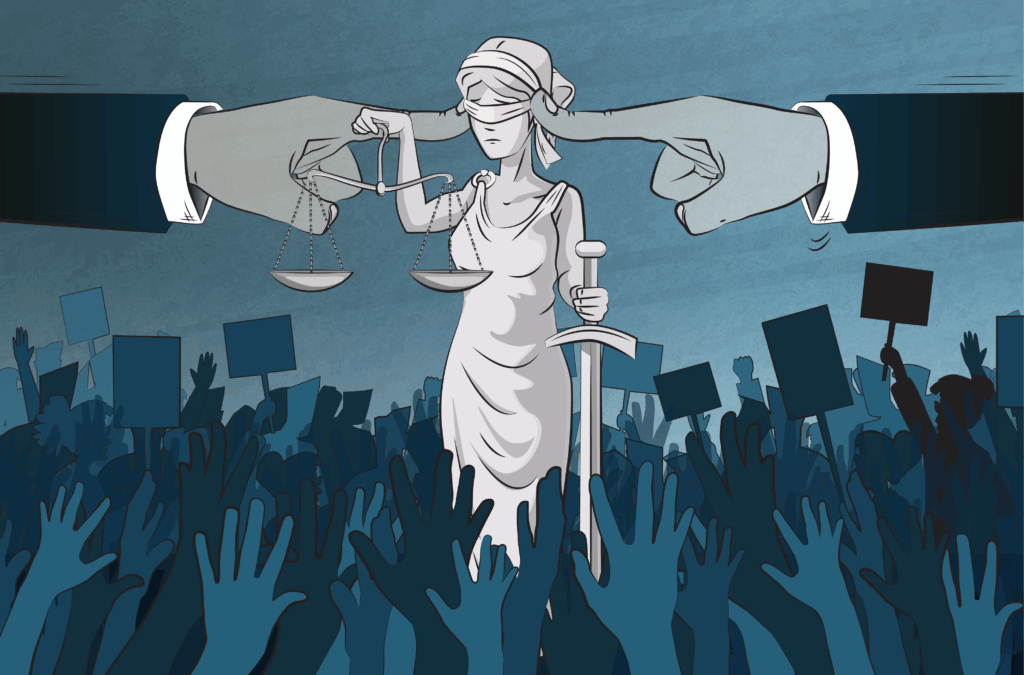
Grappling with the Supreme Court’s Chevron Doctrine Ruling

“Back in the day, when people wanted to make changes, they passed legislation,” but “we’ve shifted from the way that social change and legal change and financial change is accomplished through congressional action to two different avenues for making changes: The main one being regulation and the second one being litigation.” —Phyllis Borzi, then-assistant secretary of labor (2014)
Over the last few decades, a wide array of politically appointed federal agency officials from both sides of the political divide have responded to congressional paralysis by increasingly extending and reinterpreting the scope of their regulatory authority in order to effectuate a wide range of public policy objectives.
The U.S. Security and Exchange Commission’s recently adopted climate disclosure rules are an example of the former—extending a financial disclosure regime to encompass data on greenhouse gas emissions and other climate-related matters. Among examples of the latter are the Department of Labor, the Department of Health and Human Services, and the Internal Revenue Service’s tri-agency rules defining and redefining the maximum permissible length of a “short-term, limited duration” health plan.
The U.S. Supreme Court wrapped up its 2023-2024 term in June by issuing two opinions eviscerating such regulatory policymaking. First, and most critically, in Loper Bright Enterprises v. Raimondo, the Court overturned the 40-year-old Chevron “deference” doctrine under which federal agencies had significant latitude to interpret and apply federal statutes within their jurisdiction as long as their interpretations were not at odds with congressional intent. When reviewing an agency action under the 1984 Chevron U.S.A., Inc. v. Natural Resources Defense Council ruling, if Congress had directly addressed the subject of that action, then a court was required to enforce Congress’s statutory intent. If, however, congressional intent was unclear, then that court was required to defer to the agency’s interpretation provided that it was “reasonable.”
Second, in Corner Post, Inc. v. Board of Governors of the Federal Reserve System—issued the day after Loper Bright—the Supreme Court extended the six-year general statute of limitations for challenges to administrative rules or regulations by holding that the limitations period does not begin until a rule is first applied to a party. That means that long-settled federal rules might still be challenged by a newcomer to the regulated field.
In Loper Bright, the Court concluded that the Chevron deference doctrine is inconsistent with the requirements of the Administrative Procedure Act (APA), which itself implements fundamental principles of federal law granting the judiciary the authority to interpret the meaning of congressional statutes. In the majority opinion, Chief Justice John Roberts, quoting the Federalist Papers, noted that the “Framers…envisioned that the final ‘interpretation of the laws’ would be ‘the proper and peculiar province of the courts.’” Thus, as Chief Justice John Marshall famously concluded in Marbury v. Madison, “[i]t is emphatically the province and duty of the judicial department to say what the law is.”
The APA, in turn, provides that, in reviewing agency action, “the reviewing court shall decide all relevant questions of law, interpret constitutional and statutory provisions, and determine the meaning or applicability of the terms of an agency action.”
In reviewing agency rules and other actions, the Loper Bright Court held that this APA provision requires courts to “exercise independent judgment in determining the meaning of statutory provisions.” Going forward, a court thus must determine the best interpretation of ambiguous congressional statutes rather than a federal agency.
So where do the three branches of government go from here? How does this change how Congress legislates, if at all? How does the ruling impact the reach of agencies’ authority? How deferential will courts be to agency decision-making? The list of questions is dwarfed only by the list of opinions on each. Hearings already have been held exploring how Congress should respond to the new Loper Bright regime and reclaim its policymaking authority, but still there is no consensus.
In thinking about that impact, a few points are critical.
First, the Loper Bright Court does not criticize Congress or its statutory enactment practices. The holding solely clarifies that the courts are, as former President George W. Bush would say, “the decider” for proper application of statutes to questions for which Congress’s intent is not clear.
Second, the Court also made clear that an agency’s views of statutory meaning, while not binding on the courts, nevertheless are to be accorded due respect based on their power to persuade. In exercising their independent judgment, “courts may—as they have from the start—seek aid from the interpretations of those responsible for implementing particular statutes,” the Court said. Federal agency interpretations of a statute within its authority “constitute a body of experience and informed judgment to which courts and litigants may properly resort[.]”
Loper Bright expressly notes that agency “interpretations issued contemporaneously with the statute at issue, and which have remained consistent over time, may be especially useful in determining [a] statute’s meaning.” And where a federal statute explicitly delegates to an agency “a degree of discretion” to fill in the details of a federal scheme, the court “fulfills [its interpretational] role by recognizing constitutional delegations, fixing the boundaries of the delegated authority…and ensuring the agency has engaged in reasoned decisionmaking within those boundaries.”
Many legal commentators argue that Loper Bright will push Congress to enact statutes with much more detailed guidance and to be much more specific in delegating rulemaking authority.
Such an approach may not, however, be politically feasible.
It also may not be necessary as a practical matter. As noted, agency regulations implementing a newly enacted (or amended) statute will continue to have persuasive power with the courts. Agency efforts to address new or evolving public policy questions by reinterpreting or extending older statutes are, however, much more likely to be struck down in a post-Loper Bright world.
Given the curtailment of those agency powers, Congress might face increasing pressure to legislate when new questions or issues arise—for example, climate change responses or the manner in which cryptocurrencies or artificial intelligence should be regulated—because courts likely will be reluctant to extend the reach of statutes that were enacted without contemplating their application in such new arenas.
Finally, with respect to regulations that have been in effect for many years, Loper Bright noted that its holding “do[es] not call into question prior cases that relied on the Chevron framework.” Reliance on Chevron, the Court stated, is “just an argument that the precedent was wrongly decided,” which is not enough to overrule such precedent. Lower courts likely will adopt similar rules with respect to their own decisions.
There is, of course, tension between what essentially is a perpetual right to challenge agency rules under Corner Post and the Loper Bright statements that prior agency regulation precedents should not be relitigated. Further refinement of the new Loper Bright doctrine thus is almost inevitable but may take years to develop. As always, more to come.




